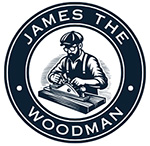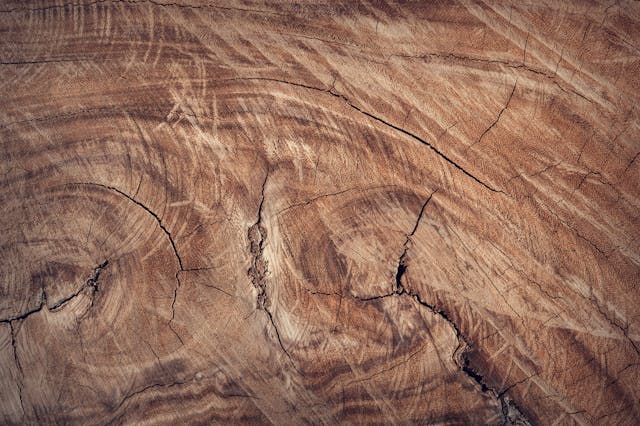Understanding End Grain Cutting Boards
End grain cutting boards are highly regarded by chefs, woodworkers, and home cooks for their durability, self-healing properties, and aesthetic appeal. Unlike edge grain or face grain boards, end grain cutting boards are constructed so the wood fibers are oriented vertically. When a knife strikes the board, the blade slips between the wood fibers rather than cutting directly across them. This not only protects the knife’s edge but also allows the fibers to self-heal, extending the lifespan of the board.
The choice of wood is critical for making a high-quality end grain board. The right wood should be hard enough to withstand knife strikes, but not so hard that it damages knives. It should be closed-grain to prevent bacteria and moisture from penetrating the surface. Stability, ease of maintenance, and aesthetic appeal are also important considerations. Below, we explore the best wood species for end grain cutting boards, highlighting their unique properties and benefits.
Maple: The Classic Choice
Maple, particularly hard maple (Acer saccharum), is perhaps the most popular and widely recommended wood for end grain cutting boards. This North American hardwood has a fine, closed grain that resists moisture and bacteria, making it hygienic and food-safe. Hard maple has a Janka hardness rating of approximately 1,450, which is ideal—hard enough to be durable, but not so hard that it dulls knives quickly.
Maple’s light color and subtle grain pattern also make it an attractive choice for both traditional and modern kitchen aesthetics. Its consistency allows for clean glue joints, making it a favorite among professional woodworkers. The availability of maple in sustainable forestry programs also makes it a responsible choice for environmentally conscious consumers.
Walnut: Aesthetic and Functional
Walnut (Juglans nigra) is a premium choice for cutting boards, especially when aesthetics are as important as functionality. Walnut’s rich, dark brown color with variations from light tan to deep chocolate provides a beautiful contrast in end grain boards, especially when paired with lighter species like maple.
With a Janka hardness of around 1,010, walnut is softer than maple but still sufficiently durable for regular kitchen use. Its closed grain structure ensures resistance to bacteria and moisture intrusion. Walnut is also less prone to warping, which contributes to the board’s longevity. Although more expensive than maple, walnut remains a popular choice for those looking to combine visual elegance with practicality.
Cherry: Smooth and Mellow
Cherry (Prunus serotina) is another excellent wood for end grain cutting boards, offering a warm, reddish hue that deepens with age. With a Janka hardness of about 995, cherry is slightly softer than both maple and walnut, which makes it gentle on knife edges and pleasant to work with.
Its closed grain pattern and smooth texture contribute to a clean, refined look and provide a hygienic surface. While cherry may show wear slightly faster than harder woods, its color and grain make it a favorite for those seeking a unique, elegant board that will develop a beautiful patina over time.
Beech: Affordable and Reliable
European beech (Fagus sylvatica) is a highly practical wood for cutting boards, widely used across Europe and gaining popularity in North America. With a Janka hardness of around 1,300, beech offers a good balance of hardness and workability. It has a fine, straight grain that provides a smooth surface and resists moisture reasonably well.
Beech tends to be more affordable than maple, walnut, or cherry, making it a cost-effective choice for quality cutting boards. However, it is slightly more prone to movement with changes in humidity, so proper sealing and care are essential. Its light color and fine texture lend a clean, professional appearance.
Ash: A Strong Alternative
Ash (Fraxinus americana) is sometimes used in cutting boards, though it is less common than the previously mentioned woods. With a Janka hardness of approximately 1,320, ash is durable and tough, offering excellent wear resistance. Its pronounced grain and light color provide a distinctive look that appeals to many woodworkers and chefs.
Ash is an open-grained wood, which means it may be more susceptible to absorbing moisture and harboring bacteria if not properly sealed and maintained. Therefore, while ash can be used successfully, it demands more attention to finishing and hygiene practices.
Other Woods: Exotic and Experimental Options
Some cutting board makers and enthusiasts explore exotic woods like purpleheart, padauk, zebrawood, or teak for end grain construction. These woods can provide striking visuals, but they come with caveats:
- Teak contains natural oils and silica, making it durable but potentially damaging to knife edges.
- Purpleheart and padauk are extremely hard, which can dull knives quickly and are also known for their toxicity in raw form, requiring careful sealing.
- Zebrawood has an open grain and can be less stable over time.
While these exotic woods may offer unique aesthetics, they are often more difficult to source sustainably and may not meet the same hygienic or knife-friendly standards as domestic hardwoods.
Woods to Avoid
Softwoods such as pine, cedar, or fir should be avoided for end grain cutting boards. These woods are too soft, resulting in deep gouges that can harbor bacteria and degrade quickly. Similarly, any wood with an open grain, excessive oil content, or toxicity should be approached with caution. Oak, for instance, while hard and beautiful, is an open-pored wood and is more prone to absorbing liquids, which compromises hygiene.
Another category to avoid includes reclaimed or treated woods, as they may contain contaminants, oils, or finishes not suitable for food contact. Always prioritize food-safe materials that are untreated and properly sealed.
The Importance of Proper Finishing
Regardless of wood type, the performance of an end grain cutting board is heavily influenced by how it is finished and maintained. A good end grain board should be sanded smooth and treated with food-safe mineral oil or beeswax to protect against moisture and staining. Regular oiling keeps the board hydrated and reduces the chance of cracking or warping.
Proper care also includes hand washing (never soaking), immediate drying, and periodic reapplication of finish. With the right maintenance, a well-made end grain board can last for decades.
Conclusion
Choosing the best wood for an end grain cutting board involves balancing durability, aesthetics, food safety, and maintenance. Hard maple stands out as the most practical and reliable choice, while walnut and cherry offer luxurious looks with excellent functionality. Beech provides a budget-friendly alternative, and ash delivers strength with visual appeal. While exotic woods may tempt adventurous woodworkers, they often come with trade-offs in performance and sustainability.
Ultimately, the best wood is the one that fits your needs in terms of use, appearance, and care commitment. When built and maintained properly, an end grain cutting board made from the right wood will become an enduring and indispensable tool in any kitchen.

